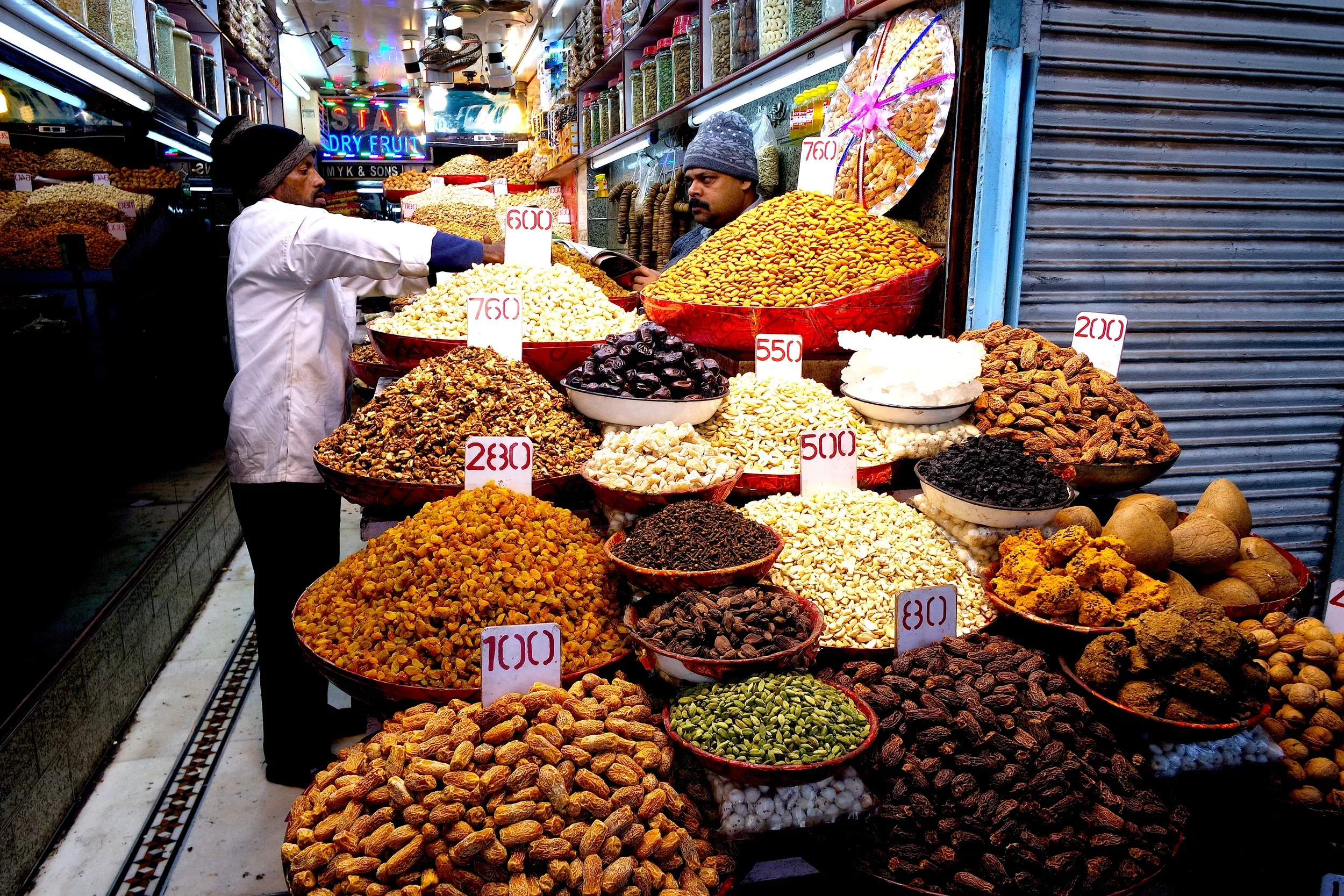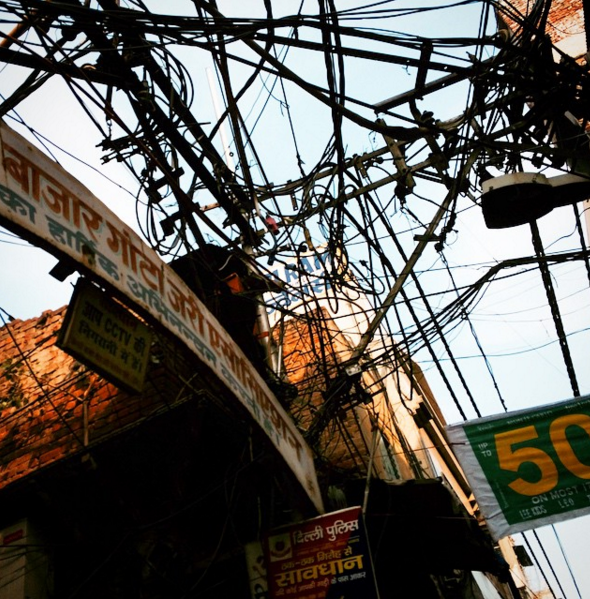The Khari Baoli Spice Market also has plenty of nuts and dried fruits
The fragrant wonderland of the Khari Baoli Spice Market.
Leaving the mosque, we got back onto the bicycle rickshaw, and Mohammed took us to the Khari Baoli Spice Market. He led us into one of the stalls he was probably familiar with (and might get a commission for bringing in customers).
When the shopkeeper appeared, he gave us each a small piece of cinnamon bark to chew on. It tasted slightly sweet but also spicy, like a stick of Big Red chewing gum, only with a distinctly more fibrous bite.
“We met a Hindu who said the trouble between the two religions all comes down to the fact that Muslims want to eat their sacred cows.”
He showed us a variety of unprocessed spices: clove, cardamom pods, coriander seeds, star anise and dried mango, which would later be ground into a powder called amchur, which adds a tart and sour note to Indian cuisine.
He also had peppers: black, white and Szechuan.
He had nutmeg and mace, which he explained come from the same tree. Nutmeg is the seed inside the fruit of the Myristica fragrans, an evergreen tree indigenous to the spice islands of Indonesia. Mace is the thin, lacy, garnet-colored membrane that envelops the nutmeg kernel and has a milder, slightly peppery flavor.
The spice vendor concluded his presentation and produced a variety of cellophane-wrapped curry blends. We purchased some garam masala, thanked him and continued on our journey.
Wally and Duke precariously perched on the back of Mohammed's bicycle rickshaw, ready to explore Old Delhi
We Learn the Differences Between Hinduism and Islam
As we were walking back to the rickshaw, Mohammed nonchalantly mentioned to us that he believes the fundamental difference between Hindus and Muslims is that Hinduism has many gods, Islam only one god, Allah.
Later, we met a Hindu who said the trouble between the two religions all comes down to the fact that Muslims want to eat their sacred cows.
We perched atop the rickshaw's thin wooden board, which acted as a seat, and passed through narrow alleys amidst a jumble of old and crumbling structures with a tangled mess of wires dangled overhead.
Wally snapped a quick pic as we wobbled along on the bicycle rickshaw through the narrow lanes of Old Delhi. Everywhere overhead were jumbles of wires like these
We saw tethered goats and even some street dogs wearing hand-me-down sweater vests and men getting roadside haircuts.
Art for Our Sake
Our next stop was a shop that specialized in silk saris and pashminas. I noticed some miniature paintings they had in a case in front of the folded pashminas and asked if they had any depicting the goddess Durga. I was met with slightly bemused smiles and head wobbles, which I took to mean “yes,” as one of the women proceeded to lay an assortment on the counter like she was dealing a deck of playing cards.
While none of them depicted Durga, we did find one of the elephant-headed god Ganesha holding an umbrella that we quite liked, as well as one depicting Krishna with gopis (milkmaids). We purchased them, but, much to the shopkeeper’s dismay, no pashminas. –Duke























